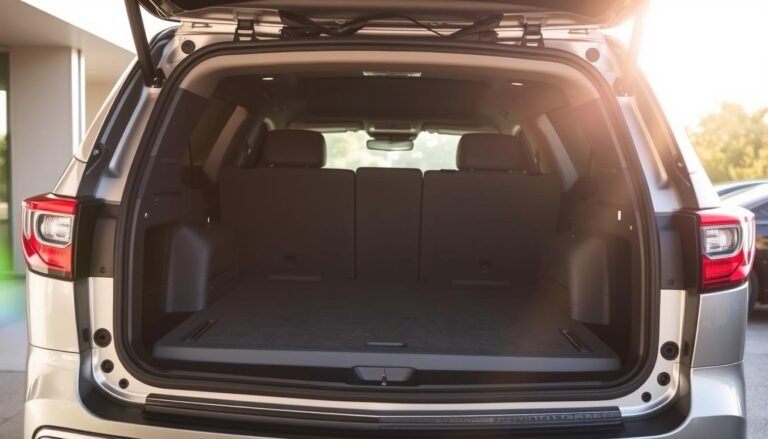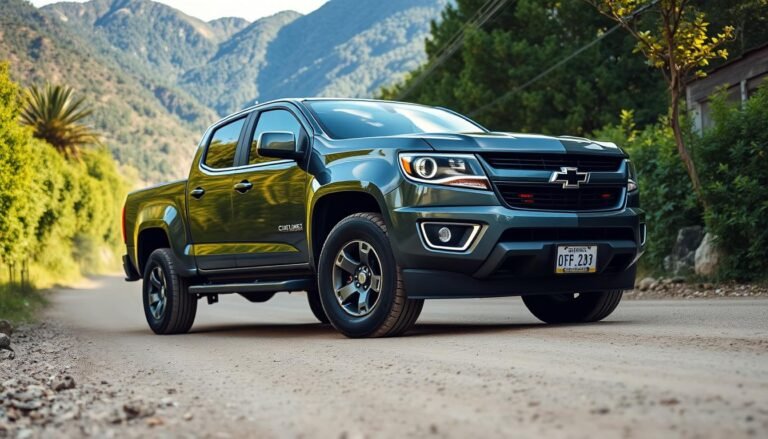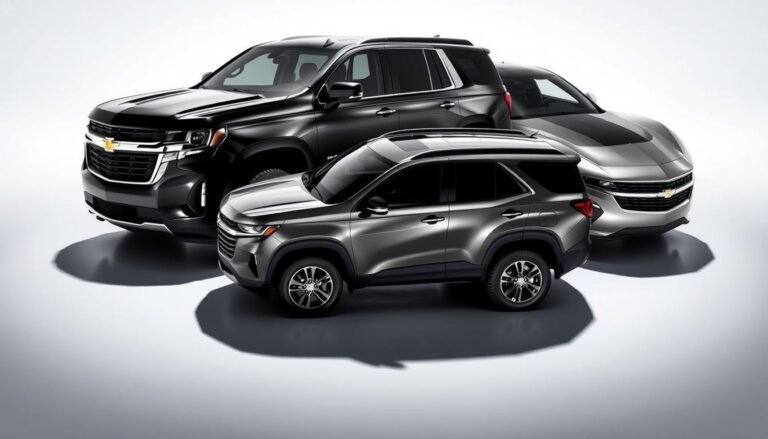Chevy 350 Firing Order Guide – Engine Setup Tips
Getting the Chevy 350 firing order right is key to top engine performance. The sequence for both the Small Block and Big Block V8 engines is 1-8-4-3-6-5-7-2.
This order is important for good combustion and smooth running, which boosts performance.
This guide will show you how to set the firing order correctly to avoid problems like rough idling, less power, and more fuel use.
For your Chevy 350 to run smoothly, you need to know a few things. These include the right firing order, how to adjust ignition timing, and connecting spark plug wires correctly.
Keeping the wires apart is also crucial to avoid interference. If the firing order is wrong, it can cause bad combustion and harmful vibrations. Let’s dive into the Chevy 350 firing order and get you set up for success!
A Brief History of The Chevy 350 Engine
The Chevy 350 engine is a big part of American car history. It’s known for being strong and adaptable. Chevy started making it in the late 1950s.
This was a key moment in the history of the Chevy 350 engine. The journey began with the 265 cubic inch V8 in 1955. By 1967, it had grown into the 350 cubic inch engine.
This showed how much Chevy’s engineering and design had improved.
The Evolution of Chevrolet V8 Engines
From 1954 to 2003, more than 100 million Chevrolet small-blocks were made. This shows how popular they are with car fans and those who love performance.
The Chevy engines changed a lot over the years. They ranged from 262 cubic inches to 400 cubic inches.
These engines were made for different uses, from everyday driving to racing. Some models could make up to 765 horsepower.
They also offered torque outputs from 215 to 620 lb-ft. The Chevy 350 engine stood out for being powerful yet reliable.
Importance of the Small Block Design
The small block design helped Chevy engines work better and last longer. It allowed car lovers to easily switch parts between models.
This made it great for custom cars and racing. The Chevy 350 engine became very important because of this.
It offered different compression ratios and could go up to 7,200 RPM. This flexibility made the small block design a key part of the Chevy 350 engine’s history.
It continues to be celebrated for its ability to deliver strong performance through the years.
| Feature | Details |
|---|---|
| Production Years | 1954–2003 |
| Total Small-Blocks Built | Over 100 million |
| Displacement Range | 262 cu in to 400 cu in |
| Horsepower Output | 110–765 hp |
| Torque Output | 215–620 lb-ft |
| Compression Ratio | 8.2:1 to 14.25:1 |
| Max Engine Speed (RPM) | 4,800–7,200 |
| Dry Weight Range | 389–600 lb |
| Firing Order | 1-8-4-3-6-5-7-2 |
Learning The Chevy 350 Engine
The Chevy 350 engine is known for its power and reliability. It stands out in the car world. This engine can produce about 350 horsepower, thanks to its 350 cubic inches size.
Learning about the chevy 350 specifications helps you keep it running smoothly and improve its power.
Specifications of the Chevy 350
Here’s a quick look at some key chevy 350 specifications to know:
| Specification | Value |
|---|---|
| Displacement | 350 cubic inches |
| Horsepower | Approximately 350 HP |
| Torque | Varies, typically around 400 lb-ft |
| Configuration | Small Block V8 |
| Fuel Delivery | Carbureted or Fuel Injected |
Differences Between Small Block and Big Block Configurations
Small block and big block engines have their differences. The Chevy 350, a small block engine, is smaller and lighter.
This makes it great for various cars. But, big block engines offer more power. They are bigger and heavier though.
This choice affects the car’s speed and how it drives. So, think about what you want from your car before deciding.
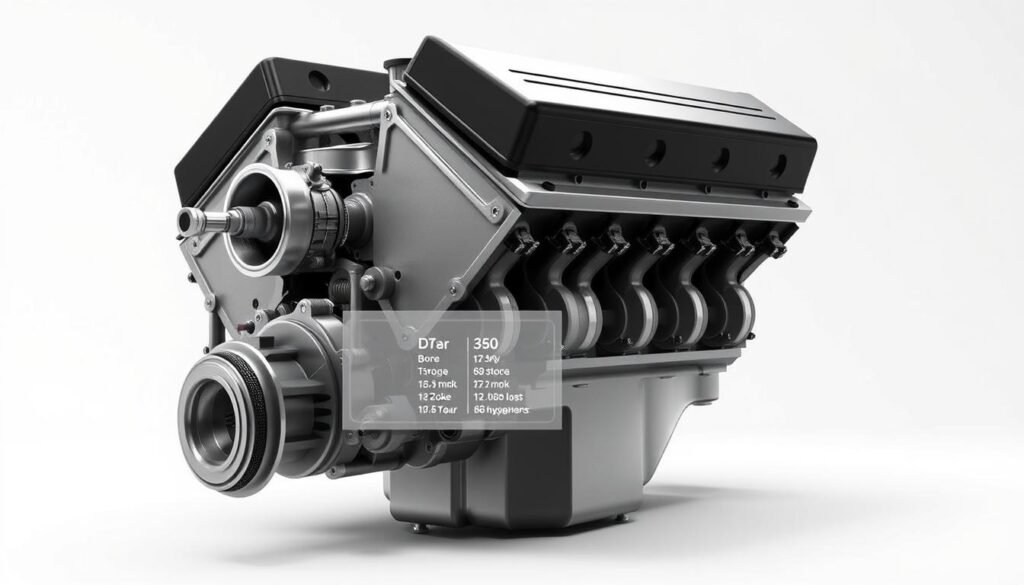
What is The Chevy 350 Firing Order?
The firing order of the Chevy 350 engine is key for top performance and smooth running. For the Chevy 350 Small Block V8, the order is 1-8-4-3-6-5-7-2.
This sequence helps the engine run efficiently and reduces shakes. Knowing this firing order is crucial for anyone fixing or taking care of a Chevy 350 engine.
Firing Order Details For Smooth Operation
In the Chevy 350’s firing order, each number stands for a different cylinder. The #1 cylinder is at the front left from the back view, usually on the driver’s side.
It’s important to connect your spark plug wires in this specific order. This prevents engine issues like rough idling and misfires.
Wrong wiring could seriously harm engine performance or stop it from starting. For adjusting hydraulic lifters, do it at the Top Dead Center (TDC) of the compression stroke for each cylinder.
Tighten all nuts to remove slack. Then turn the crank slightly to tighten any loose rockers, keeping the tight ones as is.
Make sure the timing mark lines up with the rotor pointing at the #1 cylinder. This ensures correct ignition timing.
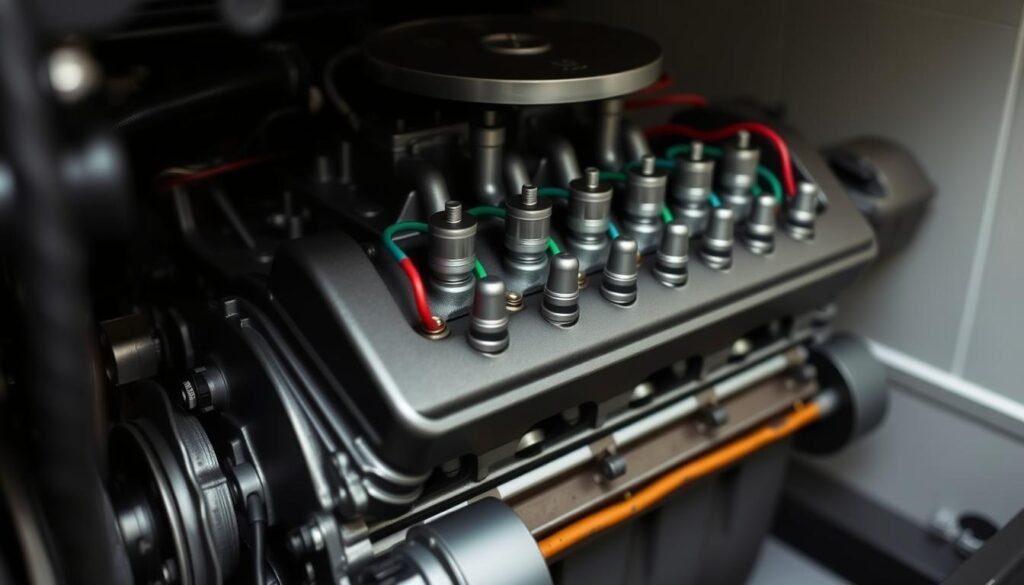
Compromising the firing order isn’t just for better engine performance; it helps your engine last longer too.
Following the firing order correctly boosts power and fixes common engine problems.
This makes it a vital rule for keeping your Chevy 350 Small Block V8 engine in good shape.
Chevy 350 Spark Plug Wire Diagram
If you’re working on a Chevy 350 engine, it’s crucial to understand the spark plug wire diagram. This diagram shows how the ignition system connects to each cylinder.
By using the right wiring layout, you can stop misfires and make sure your engine runs smoothly.
How to Read a Spark Plug Wire Diagram
Learning to read a spark plug wire diagram is easy once you know the parts. Each wire goes to a certain cylinder, following the order of 1-8-4-3-6-5-7-2 for the Chevy 350 engine.
Here’s what to do:
- Find the cylinder numbers shown on the diagram.
- Link each wire’s color or number with its specific cylinder, based on the firing order.
- Make sure the wires are placed right, without crossing or twisting, to avoid problems.
Importance of Proper Wiring Layout
Having the correct spark plug wiring layout is key for good engine function. Wires that are not right can cause:
- Bad acceleration from misfires.
- Backfires, which might harm the engine.
- Problems when starting the vehicle.
Always use the chevy 350 spark plug wire diagram as a guide. This way, you ensure the connections are right and prevent issues.

| Cylinder Number | Firing Order Sequence |
|---|---|
| 1 | 1 |
| 2 | 8 |
| 3 | 4 |
| 4 | 3 |
| 5 | 6 |
| 6 | 5 |
| 7 | 7 |
| 8 | 2 |
Setting The Chevy 350 Distributor Firing Order
Correctly setting the Chevy 350 distributor firing order is key for the engine’s health. It makes sure each cylinder fires at just the right time. This boosts efficiency and cuts down on potential issues.
Step-by-Step Guide to Setup
To set up the firing order correctly, here are the steps:
- Figure out which way the distributor turns. For the Chevy 350, it’s clockwise.
- Make sure the engine is at Top Dead Center (TDC), with the rotor aiming at the number one cylinder.
- Follow the 1-8-4-3-6-5-7-2 sequence to connect the spark plug wires correctly.
- Start by connecting wires from the number one cylinder as per the direction and follow around the cap.
- Always double-check each connection to ensure accuracy and avoid any mix-ups.
Potential Issues with Incorrect Settings
Not setting the firing order right can lead to major issues, such as:
- Rough idling and more engine shake
- Weak acceleration and loss of power
- Possible engine knock and damage over time
It’s smart to regularly check on your engine to avoid these problems. Look over the spark plugs, wires, and distributor often.
If you keep having issues with the firing order, seeing a professional mechanic can help a lot.
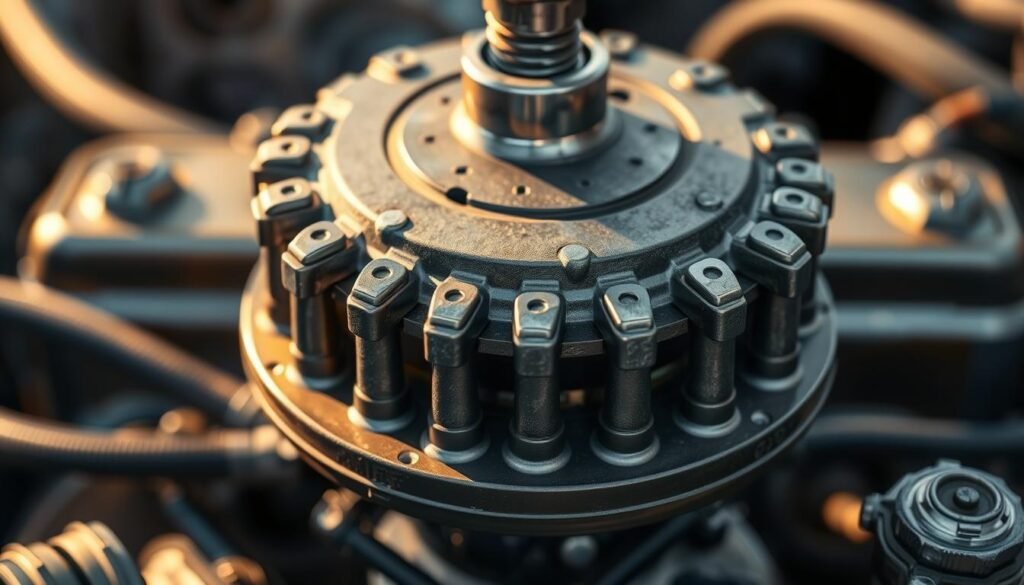
Torque Specifications For The Chevy 350 Engine
Knowing the right torque specs for your Chevy 350 is key for keeping it running well.
Sticking to these specs helps your engine parts last longer, reduces leak risks, and avoids mechanical problems from wrong torque.
Here, you’ll find the important torque values needed for the Chevy 350 engine.
Critical Torque Values to Consider
| Component | Torque Specification |
|---|---|
| Cylinder Head Bolts | 60-70 lb-ft (initially to 30 lb-ft, then 60 lb-ft, and finally to 90 lb-ft; left front to 85 lb-ft for a 327) |
| Intake Manifold Bolts | 30 lb-ft (two-step sequence: first to 20 lb-ft, then to 30 lb-ft) |
| Crank Main Caps | 75 lb-ft (for 350 engines) |
| Rod Caps | 35 lb-ft (for the 350 engine) |
Maintaining Engine Health with Proper Torque
To keep your Chevy 350 in top shape, follow the specific torque specs. The right torque prevents wear, improves efficiency, and cuts down on the chance of breakdowns.
Regular torque checks and adjustments based on the manufacturer’s guidelines are crucial. Doing so helps ensure a strong, efficient engine that lasts.
Chevy 350 Spark Plug Gap and Ignition Timing
It’s key to set the right spark plug gap for chevy 350 engines. This ensures the air and fuel mix well and ignite perfectly.
It boosts the engine’s performance and how far it can go on fuel. The timing of the spark is also vital. It makes sure the spark plugs fire at the best time in the engine’s cycle.
Recommended Spark Plug Gap Settings
The Chevy 350 works best with a spark plug gap of 0.035 to 0.045 inches. This range helps the engine run smoothly and efficiently.
Remember, the lifespan of spark plugs varies:
| Type of Spark Plug | Estimated Lifespan (miles) |
|---|---|
| Copper | 20,000 – 30,000 |
| Platinum | 75,000 – 100,000 |
| Iridium | 100,000 – 125,000 |
Depending on the ignition system, you’ll need different spark plug gaps:
- Points ignition systems: 0.030” to 0.035”
- High energy electronic ignitions: 0.040” to 0.045”
- Aftermarket CD ignitions: 0.050” to 0.060”
- Coil on plug or coil near plug ignitions: 0.050” to 0.060”
Timing Adjustments for Optimal Performance
To get the best from a Chevy 350, adjusting the ignition timing is key. The sweet spot is often 12 to 16 degrees before top dead center (BTDC).
This makes the engine run smoother and can help save fuel. Racing may need different settings for the spark plug gap and timing.
This is because of the higher pressure in the cylinders. For regular driving, a larger gap can make the engine idle better and improve response.
Troubleshooting Firing Order Issues
Setting the firing order wrong on a Chevy 350 engine can cause big problems. It’s important to know the signs of misfiring right away. This can save you time and money by avoiding serious issues.
Common Symptoms of Misfiring
Here are some common signs you might notice:
- Rough idle: The engine may shake or sound uneven.
- Loss of power: It might feel slow or not respond when you accelerate.
- Poor fuel economy: You might use more gas because the engine’s not working right.
- Engine vibrations: These shakes can mess with how your car runs.
How to Diagnose Firing Order Problems
To figure out firing order issues, here’s what you should do:
- Check the spark plug wires against the right firing order (1-8-4-3-6-5-7-2 for Chevy 350).
- Use a timing light to make sure the ignition timing is set correctly.
- Look at the spark plugs to see if there’s anything wrong with how they burn.
- Use car diagnostic tools or an OBD-II scanner to find error codes that might show misfires.
Follow these steps closely to pinpoint and fix firing order issues. This ensures your Chevy 350 runs smoothly.
Conclusion
It’s very important to know the firing order of the Chevy 350 engine for top engine care and tuning. The sequence is 1-8-4-3-6-5-7-2.
Making sure your spark plug wires are correctly connected helps avoid misfires and boosts engine performance. This guide is great for skilled mechanics and car enthusiasts.
Proper care of the Chevy 350 engine isn’t just about wiring. It also means spotting any issues early, like cylinder misfires or fuel problems.
Knowing which cylinders aren’t firing and checking compression is crucial for solving these issues.
If your car’s performance drops or it needs higher RPMs to run smoothly, check it out thoroughly.
This guide gives you the tools to take care of maintenance and repairs confidently.
Armed with the right know-how, you can keep your Chevy 350 engine running well for a long time. It’s all about improving reliability and performance.
FAQs
What is the firing order for a Chevy 350 engine?
The firing order for a Chevy 350 engine is 1-8-4-3-6-5-7-2.
How do I connect the spark plug wires on a Chevy 350?
Check the spark plug wire diagram for the Chevy 350. Connect each wire according to the correct firing order. This prevents misfires.
What direction does the distributor rotate on a Chevy 350?
The distributor in a Chevy 350 rotates clockwise.
What is the recommended spark plug gap for a Chevy 350?
The ideal spark plug gap for a Chevy 350 is between 0.035 to 0.045 inches.
How do I set the ignition timing for a Chevy 350?
For the Chevy 350, set the ignition timing to about 12 to 16 degrees before top dead center (BTDC). This ensures the best performance.
What are common symptoms of a misfiring engine in a Chevy 350?
Rough idling, loss of power, and poor fuel economy are common misfire symptoms.
How can I troubleshoot firing order issues?
Start by checking the spark plug wire connections. Next, review the timing settings. Finally, inspect the spark plugs visually.
Why is maintaining torque specifications important for a Chevy 350?
Proper torque specs ensure your engine runs well and lasts long. Loose parts can cause issues or even engine failure.


